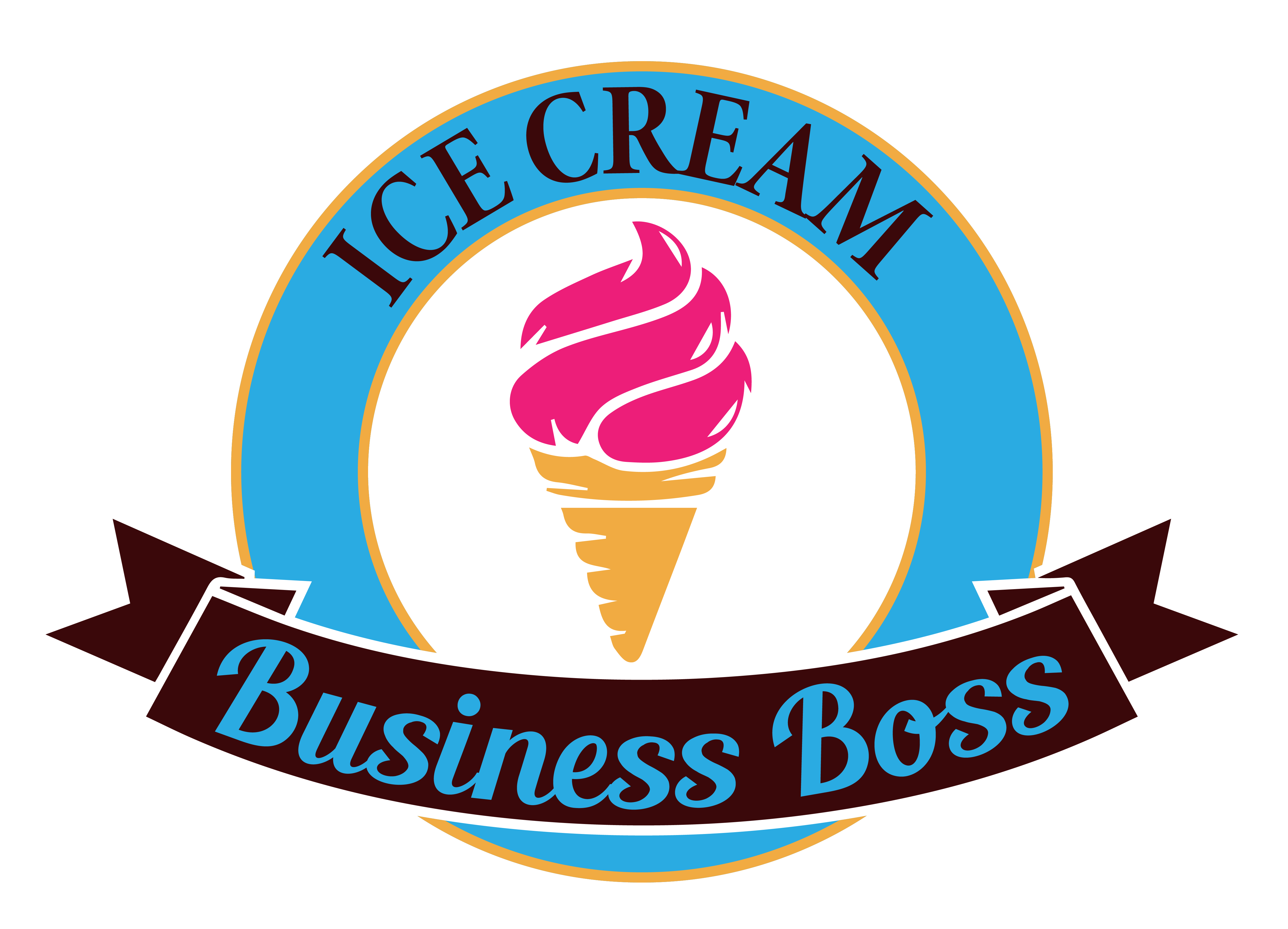The world of frozen confections offers a tantalizing chance for entrepreneurs amid the happy jingles of ice cream trucks and the laughter of families gathered at parlors. However, the pursuit of sweet achievement in the ice cream company extends beyond creating delectable tastes and experiences. The average profit margin is a critical indicator that affects the financial health of every growing ice cream shop.
To maximize earnings in the ice cream business, you should start by understanding how shop location, pricing strategies, and operational efficiency impact the profit margin, typically between 10% to 20% of total revenue.
In this article, we’ll go on a journey to discover the dynamics of this critical figure, digging into how it’s calculated, the elements that influence it, and the techniques that ice cream shops use to boost their profits.
Understanding the Impact of Shop Location
The growth of an ice cream shop is dependent on a variety of elements, with the shop’s location standing out being a critical component. The importance of shop location in the ice cream industry cannot be overstated, as it has a deep influence on the first impression customers form and plays a critical role in influencing their decision to indulge in a delectable cone or a sumptuous sundae. Beyond a simple storefront, the site of an ice cream shop is extremely strategic, since it can decide whether the business survives or fails.
A prominent location is like a siren’s song in the complicated dance of commerce, luring a consistent stream of foot traffic that converts into higher sales numbers and, as a result, a wider profit margin. Because of the emotional connection customers have with their frozen delicacies, the relationship between locations in the ice cream trade is very strong.
The draw of an ice cream shop nearby is evident as people wander through bustling shopping areas, explore lively tourist hubs, or unwind in parks and recreational havens. It’s a sensual invitation that causes a pause, a smile, and an insatiable want to indulge.
Ice cream entrepreneurs are recommended to seek out spots in the heart of the bustle for the best outcomes. The hectic atmosphere of shopping districts, where shoppers are absorbed in retail therapy, provides an excellent opportunity to reach a varied audience.
Similarly, carefully stationing yourself among tourist attractions allows you to capitalize on the influx of visitors looking for authentic experiences and distinctive flavors. Placing the business near parks and recreational locations capitalizes on the leisurely excursions of families and individuals looking for a tasty respite.
Recognizing the synergistic relationship between location and demographic factors, ice cream firms can benefit from setting up shop near schools and institutions. Young people are especially susceptible to the seduction of frozen treats, making them an invaluable target group. Ice cream shops can develop a link with students and professors alike by becoming a local hangout. This bond can extend beyond just consumption to include community engagement.
The hunt for an ideal location, on the other hand, is not without challenges. The cost of securing a great location must be carefully weighed against the potential benefits. While a high-traffic neighborhood may promise an influx of clients, the high rent may eat up a considerable percentage of the predicted profits. This contradiction needs thorough investigation and an in-depth examination of local demographics and competing companies.
Check out this article to learn more about a gelato’s business profit margin.
Crafting Effective Pricing Strategies

Pricing On the surface, ice cream appears simple, but it is a subtle ballet that involves dexterity in balancing affordability and profitability. Setting the correct pricing points for your ice cream goods requires careful consideration of a variety of factors, including ingredient prices, market competition, and the inherent value your creations provide. Setting prices that are too high may turn off potential clients, while pricing that is too low may compromise your profit margins.
Understanding the intricate network of perceived value is important to the complex process of pricing ice cream. The perceived value of your ice cream offerings is influenced by the quality of ingredients, the distinctiveness of flavors, and the artistry of presentation. Customers understand the improved quality they are receiving when premium ingredients supplied by reputable suppliers are used to justify a higher price tag.
Infusing your works with novel and unusual flavors can provide a sense of exclusivity, allowing you to charge a higher price in the market. Innovative presentation strategies that engage the senses can boost perceived value even further, making buyers more inclined to pay a greater price for the experience.
A well-planned pricing strategy will also include the introduction of tiered price structures. This strategy entails providing a variety of solutions to cater to a wide range of customer preferences. For example, increasing portion sizes or launching combo deals that bundle many goods together can encourage customers to spend more money. This not only increases average transaction value but also gives customers a sense of choice and value, ultimately promoting customer loyalty.
Adaptability is essential in the ever-changing ice cream industry. It is critical to assess and alter your pricing strategy regularly to be competitive. Because of market dynamics, ingredient costs, a critical component of your pricing calculation, might fluctuate. It is critical to keep a close watch on these expenditures and include them in your pricing model to avoid putting undue strain on your profit margins.
Customer feedback is another priceless piece of information that should inform your pricing decisions. You can learn about your consumers’ preferences, expectations, and value perceptions by actively listening to them. This real-time feedback loop enables you to make smart pricing plan adjustments, aligning it more closely with what your clients are ready to pay.
Staying tuned in to broader industry trends is critical in a market characterized by dynamic movements and shifting consumer preferences. Be aware of changes in consumer behavior, new competitors, and changing market dynamics. Responding to these developments by adjusting your pricing approach presents your ice cream firm as a relevant and competitive competitor.
Driving Operational Efficiency

The basis upon which any business’s growth is based is operational efficiency, and the ice cream industry is no exception. The complex interaction of improved procedures, waste reduction, and better employee performance can have a significant impact on your profit margin. Improving operational efficiency in your ice cream shop necessitates a multifaceted approach that includes everything from modern equipment integration to prudent inventory management and employee training.
Embracing technological innovation by purchasing contemporary equipment is a critical step toward increasing operational efficiency. Upgrading your production line with cutting-edge machinery not only speeds up production but also ensures consistency in the quality of your frozen treats. This dual benefit translates into lower labor costs and improved product integrity.
Efficient machinery speeds up the ice cream-making process, saving your workers time and effort. Product quality consistency ensures that clients have the same enjoyable experience with each purchase, creating loyalty and great word-of-mouth marketing.
To achieve operational efficiency, inventory management must be meticulously orchestrated. Maintaining an optimum ingredient stock while minimizing waste is an art that can have a significant impact on your bottom line. Overstocking ingredients not only immobilizes valuable capital but can also result in waste due to spoiling, making it an unsustainable strategy.
Understocking, on the other hand, might result in lost sales opportunities, leaving consumers unsatisfied and revenue unrealized. Implementing inventory monitoring systems and utilizing the power of predictive analytics can help you manage this difficult balance. These solutions provide you with real-time insights, allowing you to make informed decisions about ingredient usage based on client demand and market variations.
Human capital is still an important aspect of operational efficiency, with well-trained employees serving as the foundation of outstanding customer service. Creating a connection that compels clients to return and promote your establishment to others is what it takes to provide a memorable customer experience.
Investing in training programs that teach your employees how to give efficient and friendly service improves the reputation of your brand. Notably, the skill level of your team can have a significant impact on upselling expensive products. This, in turn, raises the average transaction value, thereby leading to a higher profit margin.
Dive in the world of profit margin of an ice cream franchise by visiting our article here.
The Synergy of Shop Location, Pricing Strategies, and Operational Efficiency

Within the context of an ice cream business, the intricate interaction of shop location, pricing tactics, and operational efficiency creates a multiplier effect that dramatically increases profitability. While each of these variables is important in its own right, their harmonious convergence results in a dynamic synergy that propels your company’s growth to new heights.
Consider an ice cream shop in a prime location, set among the colorful tapestry of a bustling tourist neighborhood. The enticing aroma of freshly made waffle cones fills the air as people weave through the bustling streets, luring them inexorably closer to the appealing storefront. This strategic location acts as the first point of contact, producing a fascinating first impression that piques passersby’s curiosity and draws them into the realm of frozen treats.
Customers are greeted by a menu board specifically crafted to promote superior flavors and attractive combo packages after being captured by the charm of the great location. Pricing tactics are used here, focusing on the emotional connection people have with the concept of indulging in a special delicacy.
The artistic display of options persuades customers to choose greater portion sizes or intriguing combinations, resulting in higher spending per transaction. As customers eagerly embrace the opportunity to savor more and spend more, the synergy between the strategic location and well-thought-out pricing strategy becomes clear.
When you walk into the shop, the well-choreographed dance of operational efficiency takes center stage. The staff, like a well-oiled machine, expertly and cheerfully manages the influx of orders. The streamlined operations reduce wait times, ensuring that clients are served quickly and their cravings are satisfied without delay. This operational flexibility is the result of diligent training and optimization work behind the scenes.
The result of these coordinated efforts is an immersive experience for customers. The ideal location serves as the initial stimulus, while price schemes encourage spending and excess. However, operational efficiency is the cornerstone that turns the promise of a wonderful experience into an actual reality. Customer pleasure is translated into repeat business and positive word-of-mouth referrals when orders are filled efficiently and a lively atmosphere is maintained.
The combination of these variables results in a profit margin that exceeds industry norms. In a business landscape where profit margins of 10% to 20% are considered average, the coordinated interaction of store location, pricing strategies, and operational efficiency has the potential to exceed the predicted bounds of your ice cream business’s profitability. It is the extraordinary combination of these qualities that distinguishes a thriving business from its competitors and places it as an achievement beacon in the ice cream market.
Frequently Asked Questions
How does the location of an ice cream shop affect its profitability?
The location of an ice cream shop is critical to its profitability. A high foot traffic location can attract more consumers, resulting in increased sales and a higher profit margin. Selecting a site in a popular area such as a commercial district, tourist attraction, or near a school can considerably help to financial growth.
What are effective pricing tactics for an ice cream business?
Developing effective pricing strategies requires balancing ingredient costs, competition, and perceived value. Customers may spend more if you offer tiered pricing, such as larger sizes or package promotions. Higher prices might be justified by premium components and imaginative presentation. To ensure profitability, prices must be reviewed and adjusted regularly depending on market changes and client feedback.
How does operational efficiency affect an ice cream shop’s profit margin?
Operational efficiency is critical for the ice cream business. Modern machinery increases production speed and quality while decreasing labor expenses. Overstocking and waste are avoided with effective inventory management. Excellent customer service and upsell chances are provided by well-trained staff, increasing the average transaction value. The combination of these elements leads to a bigger profit margin.
The information provided by IceCreamBusinessBoss.com (“The Site”) is for general informational purposes only. All information on the Site is provided in good faith, however, we make no representation or warranty of any kind, express or implied, regarding the accuracy, adequacy, validity, reliability, availability, or completeness of any information on the Site. Under no circumstance shall we have any liability to you for any loss or damage of any kind incurred as a result of the use of the Site or Reliance on any information provided on the Site. Your use of the Site and your reliance on any information on the Site is solely at your own risk. This blog post is for educational purposes only and does not constitute legal advice. Please consult a legal expert to address your specific needs. Terms and Conditions.

Hi! I am Shawn and I am a happy individual who happens to be an entrepreneur. I have owned several types of businesses in my life from a coffee shop to an import and export business to an online review business plus a few more and now I create online ice cream/gelato business resources for those interested in starting new ventures. It’s demanding work but I love it. I do it for those passionate about their business and their goals. That’s why when I meet a ice cream/gelato business owner, I see myself. I know how hard the struggle is to retain clients, find good employees and keep the business growing all while trying to stay competitive.
That’s why I created Ice Cream Business Boss: I want to help ice cream and gelato business owners like you build a thriving business that brings you endless joy and supports your ideal lifestyle.

